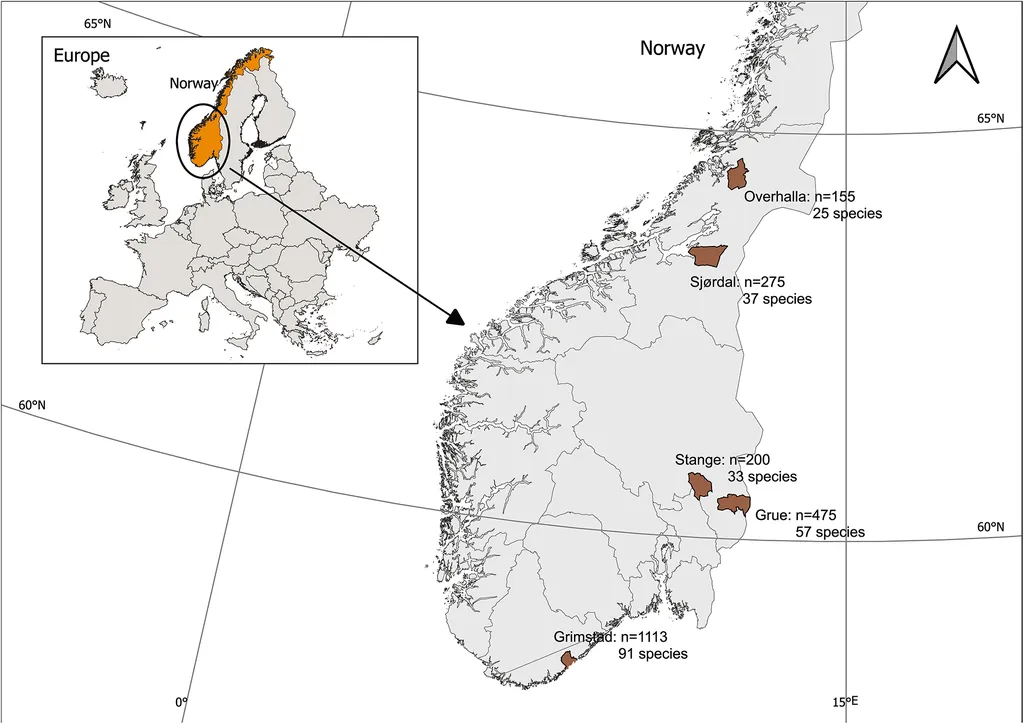In the rolling potato fields of Norway, an unseen battle rages, one that could significantly impact the agriculture sector. Aphids, those tiny yet formidable foes, are not just a nuisance; they are vectors for devastating plant viruses. A recent study published in *Scientific Reports* sheds light on the complex world of aphid populations and their potential to transmit viruses in potato fields across different seasons and regions in Norway. The research, led by Nina Svae Johansen from the Division of Biotechnology and Plant Health at the Norwegian Institute of Bioeconomy Research, offers crucial insights that could revolutionize pest management strategies.
The study, conducted over three years (2016–2018), involved collecting and identifying aphids from five potato fields located between 58–64 °N. Using yellow pan traps, the researchers amassed a staggering 6,136 aphids, of which 2,218 were identified through traditional barcoding—a method that sequences a ~650 fragment of the mitochondrial COI gene. This meticulous process revealed a diverse array of 137 different species, with 111 identified at the species level and the remaining only to the genus level, hinting at potential novel species.
The findings are particularly noteworthy for the agriculture sector. “The southernmost sampling location yielded the highest number of species and individual counts,” Johansen noted, although the study did not find clear correlations to climate factors like temperature or precipitation. This suggests that local ecological conditions might play a more significant role in aphid population dynamics than previously thought.
Of the 111 species identified, at least 39 are potential vectors of potato virus Y (PVY), a significant threat to potato crops worldwide. Nine species may also transmit potato virus A (PVA). Understanding the abundance and phenology (the timing of biological events) of these virus vectors and non-vectors is crucial for improving pest management in potato cultivation.
The commercial impacts of this research are profound. By identifying the key aphid species that transmit viruses, farmers and agronomists can develop more targeted and effective pest management strategies. This could lead to reduced crop losses, increased yields, and ultimately, higher profits for potato growers. The study also highlights the importance of continuous monitoring and research to adapt to changing aphid populations and their virus-vector potential.
Johansen’s work is a stepping stone towards more sustainable and efficient agricultural practices. As she puts it, “Knowledge on virus vector and non-vector aphid abundance and phenology has the potential to improve pest management of potato cultivation.” This research not only advances our understanding of aphid ecology but also paves the way for innovative solutions to protect one of the world’s most important staple crops.
In the ever-evolving landscape of agriculture, staying ahead of pests and diseases is a constant challenge. This study, published in *Scientific Reports* and led by Johansen from the Norwegian Institute of Bioeconomy Research, provides valuable insights that could shape the future of potato farming. As we continue to grapple with the impacts of climate change and evolving pest populations, such research is more critical than ever. It offers a glimpse into a future where technology and science work hand in hand to safeguard our food security and the livelihoods of farmers worldwide.

